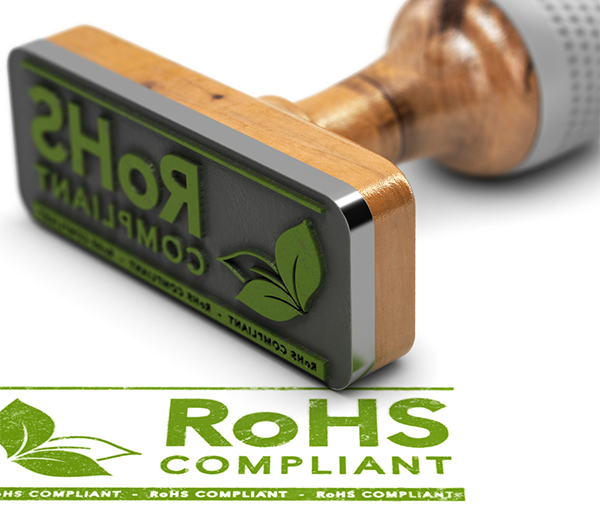RoHS directive refers to the directive on limiting the use of certain harmful ingredients in electronic and electrical equipment. As the whole directive is reviewed, updated and amended this time, it is generally called rohs2.0. At present, there are mainly two types of restricted harmful substances, namely heavy metals and flame retardants (containing bromine);
1. What is the definition of electronic and electrical products regulated by rohs2.0 directive?
According to the directive, the equipment and supporting products that rely on current or electromagnetic field or for the purpose of generating, transmitting and measuring current and electromagnetic field and whose rated working voltage is DC not more than 1500 V and AC not more than 1000 V are called electronic and electrical products.
In addition, the maintenance parts or re-use parts or cables of electronic and electrical products or parts upgrading their function / capacity are also within the jurisdiction of rohs2.0 directive.
2. Is a company producing solar panels required to meet rohs2.0 directive?
According to item I of Article 2 (4) of rohs2.0 directive, solar panels used to provide energy for public, commercial, residential and industrial use and designed, assembled and installed by professionals can be exempted, that is, they are not required to fulfill their obligations under rohs2.0.
Except for individual exemptions, there are 10 categories of electronic and electrical products restricted by rohs2.0 directive, namely:
(1) Large household appliances
(2) Small household appliances
(3) Information technology and telecommunication equipment
(4) Consumer equipment
(5) Lighting equipment
(6) Electrical and electronic tools
(7) Toys, leisure and sports equipment
(8) Medical equipment
(9) Monitoring and control equipment (including industrial monitoring and control equipment)
(10) Vending machine
3. Do you need to meet the requirements of rohs2.0 for export to the United States?
We need to make it clear that the rohs2.0 directive only restricts the countries in the European Economic Area (EEA), including the EU 28, Norway, lichtenston and Iceland. Therefore, exports to the United States do not need to meet the ROHS requirements. Although it does not need to comply with ROHS, the United States has consumer goods act (CPSA and CPSIA) to monitor product safety, and the compliance work still needs to be performed.
Key words: restricted substances
1. Is there any increase in hazardous substances restricted by the new and old RoHS directives?
The old ROHS directive restricted substances include: lead, cadmium, mercury, hexavalent chromium, polybrominated biphenyls, polybrominated diphenyl ethers, six; the new ROHS directive restricted substances add four types of plasticizer products, including: DEHP (DI (2-ethyl) hexyl phthalate), BBP (butyl phthalate benzyl ester), DBP (dibutyl phthalate), DiBP (diisobutyl phthalate) tetra So far, the number of RoHS regulated substances has increased to 10.
The threshold value of CD was 0.01% (mass fraction), and the others were 0.1% (mass fraction).
2. Is there any change in the limit requirement of harmful substances?
Except for cadmium, the threshold value of the above-mentioned 10 substances is 0.01% (mass fraction), the others are all 0.1% (mass fraction), and all the determination of content is based on homogeneous materials, that is to say, the content of harmful substances in each homogeneous part of electronic and electrical products needs to meet the threshold requirements, not the whole electronic and electrical products.
3. Which substances are specifically included in polybrominated biphenyls and polybrominated diphenyl ethers?
The restrictions on PBBs and PBDEs actually restrict the use of these two kinds of substances, and the most common ones in electronic and electrical products and equipment are pentabromo, octabromo and decabromo.
 Customer hotline:+86-136 6283 9331
Customer hotline:+86-136 6283 9331 Customer hotline:+86-136 6283 9331
Customer hotline:+86-136 6283 9331
